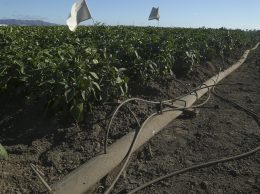Editorial: Smart management and technology could ease water woes
It turns out that drying wells in the Paso Robles basin were just the canary in the coal mine.
Gov. Jerry Brown’s timely drought declaration on Jan. 17 may become a pivotal moment in the history of California and the region. It may be the impetus needed to spur large infrastructure projects and get California’s vaunted technologists working on a problem that is both as old as the Golden State and as new as the growing confirmation that an era of human-induced climate change is upon us.
During an MIT Enterprise Forum of the Central Coast program on Jan. 15 in Santa Barbara, some top experts gave their views on water and the future of the resource in the region. Hydrogeologist
Mark Kram said that for the first time in decades, we are about to experience a food production shortfall based on lack of available water rather than tillable land.
However, Kram believes that technology — including better record keeping, advanced sensors, precision agriculture and managed demand — will all play a role in creating an overhauled and more flexible water system.
“We can have a smart city that manages water. We do not have a technology drought,” he said.
Ventura County Farm Bureau CEO John Krist said the county’s farmers are feeling the effect of drought because the increased cost of water immediately impacts profit margins, valuable crops such as strawberries are using water efficiently but they need big amounts early in the growing process.
The entire tri-county region was included in the disaster declaration and that frees up Small Business Administration loans and other assistance for businesses impacted by the drought. There is talk in Paso Robles, where some users of shallow groundwater saw their wells run dry this spring, of two sparring factions working together toward a solution that doesn’t involve expensive litigation.
But the bottom line on water is that this crisis won’t end with a large rainstorm, or overnight.
It will take creativity, new pricing schemes and some very large infrastructure projects to get water to Southern California and to use it wisely. Agricultural interests will have to get a lot smarter about using water in sustainable ways, and cities will have to get a lot smarter about metering and water use.
Can it work? An early spring drought declaration on the front range of Colorado last spring led to a more than 20 percent drop in water consumption practically overnight — leaving water agencies scratching for revenue.
California can fix its water problems. But it will take time, attention and money to make the solutions work.











